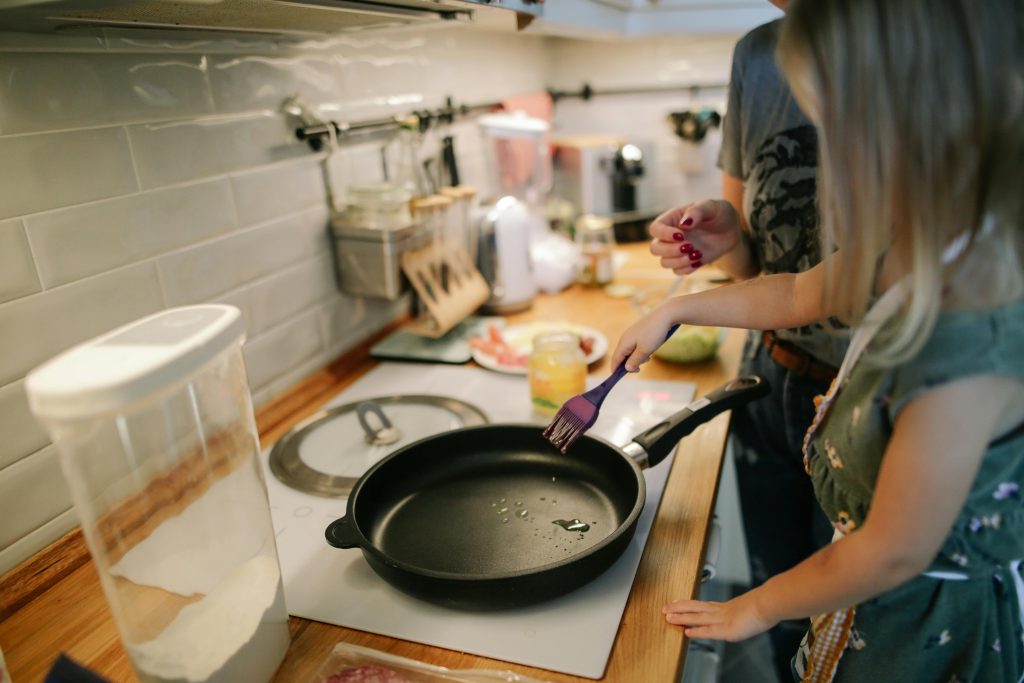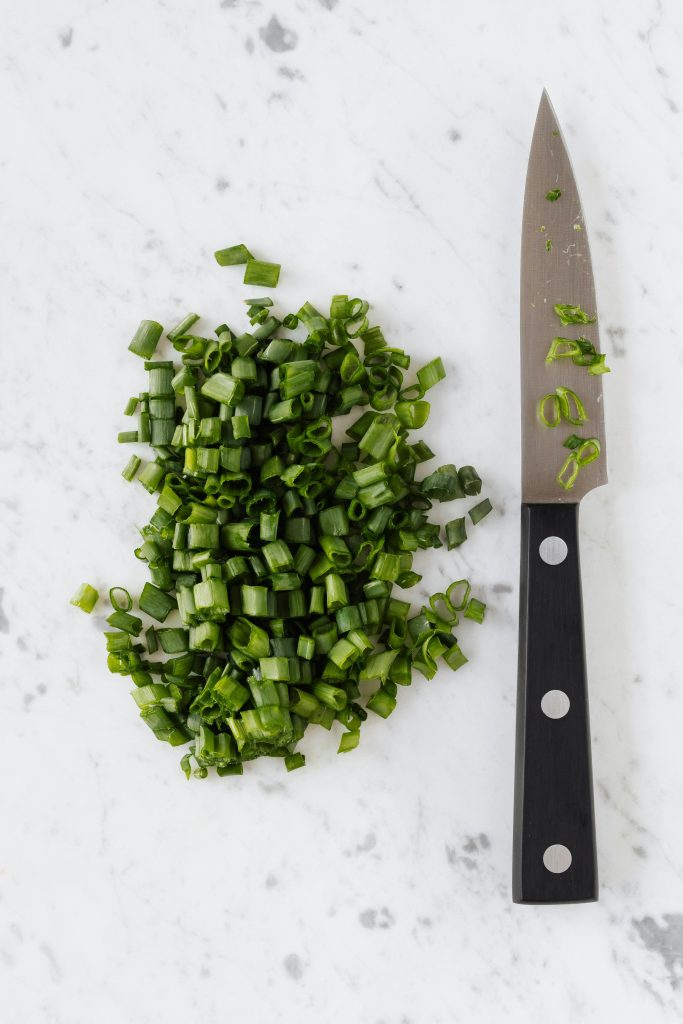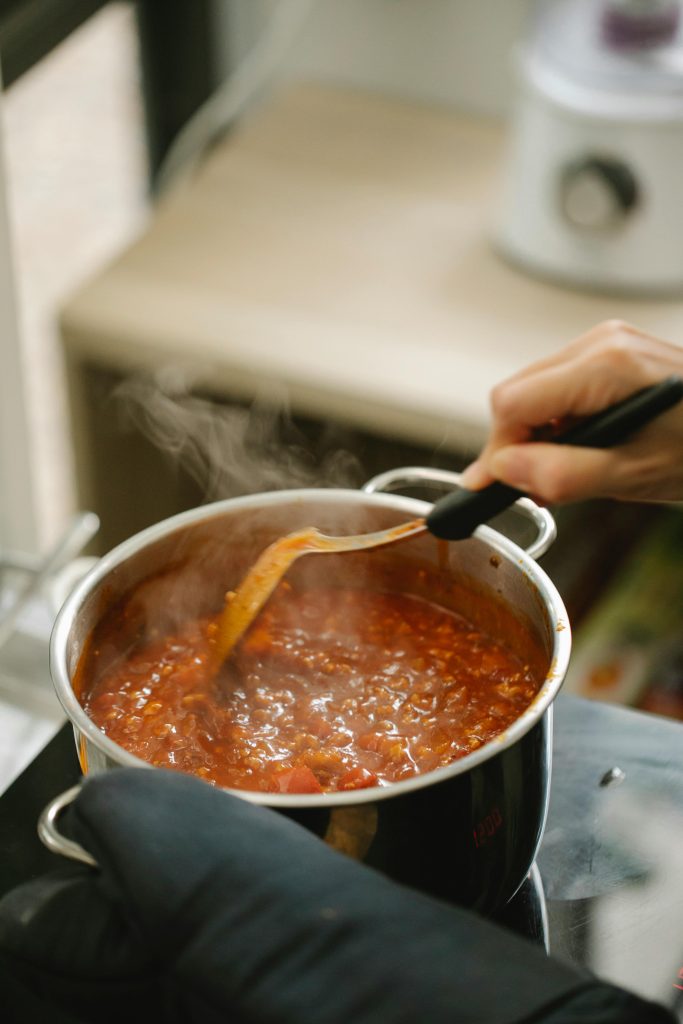
Kitchen Safety 101: Safety Tips Every Beginner Should Know
Learning to cook can be an exciting and rewarding experience and we want to make sure you get the most out of the journey by keeping safe to prevent injuries and accidents. We prefer that you cut the vegetables not your fingers!
Whether you’re a novice or just looking to brush up on some key safety practices, these tips will help ensure you work in a safe cooking environment. Added bonus – download our free Printable Safety Checklist to keep these tips handy!

Essential Kitchen Safety Tips
Keep It Clean – Always start with a clean kitchen
Wipe down surfaces, clean utensils, and ensure your hands are washed thoroughly. A clean kitchen prevents cross-contamination and reduces the risk of foodborne illnesses. Added bonus is that you will be able to focus on your cooking and not clearing up dirty dishes or worrying about tidying up other areas.
Knife Safety – Use sharp knives and cut away from your body. Always use a cutting board.
Sharp knives are safer as they require less force to cut, reducing the chance of slipping and causing injury. Wet a paper towel and place it under your chopping board for extra stability. Remember to never cut foods you are holding in your hands when you are just starting out – accidents do happen!

Avoid Distractions – Stay focused while cooking
Distractions can lead to accidents, such as burns, cuts, or fires. Try and cook in a time and space when you can focus. I know for some this is a task especially if you have a family but try and keep small children away so you can do what you need to. Distractions can also lead to incorrect measurements or mistakes in following a recipe so it’s always preferable to try something new when you can focus
Proper Attire – Wear appropriate clothing, including closed-toe shoes and avoid loose sleeves.
Having an apron on can help prevent injuries from splashes and spills and keeps your clothes clean. Closed in shoes protect your feet from dropped objects and spills.

Handle Hot Items with Care – Use oven mitts or pot holders when handling hot pots and pans.
Protect your hands from burns by using the right protective gear. If you don’t have mitts or holders a good quality thick tea towel will also work. There is nothing worse than reaching for a pot handle or oven tray and forgetting it’s hot! If in doubt, always use something to move or manoeuvre your utensil
Know Your Equipment – Familiarise yourself with the kitchen equipment you’re using. Read manuals and follow instructions.
If you know how to use it you minimise the chance of something going wrong. Spinning blades, hot liquids in blenders and sharp slicers can all cause accidents if you don’t know how to handle them correctly. Electric appliances need to be used correctly and with caution to prevent injury and accidents.
Fire Safety – Minimise the chance of fires. Never leave stove top cooking unattended. Set a timer if you need to walk away
Unattended pots and pans can quickly lead to fires or close calls. If you have to walk away from your stove, turn off the heat source or turn it down to the minimum. If you are letting something simmer or slow cook a timer is your best friend to not forget to return. In the case of a fire, always call 000 in Australia or the emergency number for your country

Store Foods Safely – Store raw and cooked foods separately. Keep perishable items refrigerated.
Proper food storage prevents cross-contamination and spoilage. Refrigerated foods must be kept below 4 degrees Celsius and frozen foods below 18 degrees Celsius. Always check your food labels for shelf life and dispose of out of date items. Always store cooked foods above raw and keep items in sealed containers or covered with plastic wrap to prevent cross contamination.
Use Appliances Correctly – Don’t overload electrical outlets and unplug small appliances when not in use.
Prevent electrical fires and ensure appliances are used safely. Don’t burn out motors by using them at incorrect speeds or for incorrect uses

Child Safety – Keep knives, hot items, and small appliances out of reach of children.
Protect children from potential kitchen hazards by keeping dangerous items out of their reach. Where possible keep young children out of the kitchen to prevent accidents. Always move pot and pan handles to the inside of the stove, use safety knobs where applicable and never allow children in the kitchen unattended when the stove or oven is on.
Be Cautious with Oils – Heat oils slowly to avoid splattering, and never add water to hot oil.
Hot oil can cause severe burns, so handle with extra care. Heating slowly allows you to remain in control of the temperature. Never deep fry food items without using the correct appliance to do so. Allow excess cooking oils to cool before disposing of correctly. Use tongs or other appropriate utensils to flip, fry and stir ingredients in hot oils
First Aid Knowledge – Keep a first aid kit in the kitchen and know basic first aid procedures.
Being prepared for minor injuries ensures quick and effective responses. In the case of an emergency, call 000 or the emergency number of your country
Bonus: Safety Checklist Printable
Download our free Kitchen Safety Checklist here to keep these tips at your fingertips. Print it out and hang it in your kitchen as a reminder to always prioritise safety while cooking.
Prioritising safety in the kitchen helps create a pleasant and accident-free cooking environment. By following these tips and keeping our Safety Checklist handy, you can enjoy your culinary adventures with peace of mind.
Ready to enhance your cooking skills while maintaining a safe kitchen? Sign up for our beginner cooking classes today! Our expert chefs will guide you through essential techniques and safety practices.
Stay Connected:
Follow us on Facebook and Instagram for more tips, recipes, and updates.